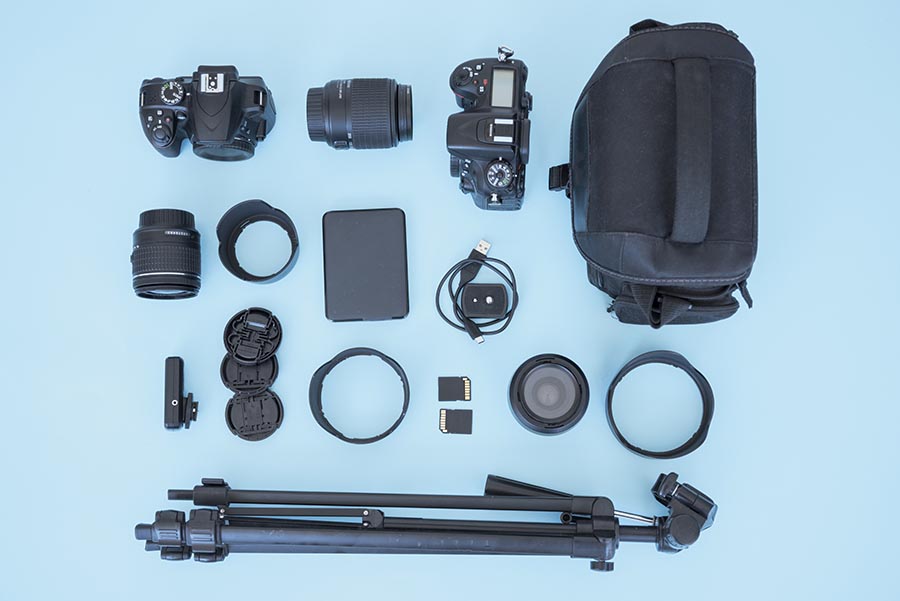Photography is an exciting and creative hobby that allows you to capture memories, tell stories, and express yourself through visual imagery. However, getting started in photography can be daunting, especially when choosing the right gear. This guide aims to simplify the process by outlining the best beginner-friendly cameras, accessories, lenses, lighting equipment, and post-production tools. By the end of this guide, you’ll have a solid understanding of the essential photography equipment you’ll need to start your journey.
Camera
Electing an appropriate and user-friendly camera that aligns with your requirements and budget is essential when starting in photography. For a beginner, three primary types of cameras are recommended: point-and-shoot, mirrorless, and DSLR. These camera equipment options offer various features and benefits, allowing you to choose the one that best suits your needs and preferences.
Point-and-Shoot Cameras
Compact, lightweight, and user-friendly are the key features of point-and-shoot cameras. They offer automatic settings, making them perfect for those who want to focus on composition rather than technical details. The downside is that they have limited manual control and smaller sensors, which can impact image quality.
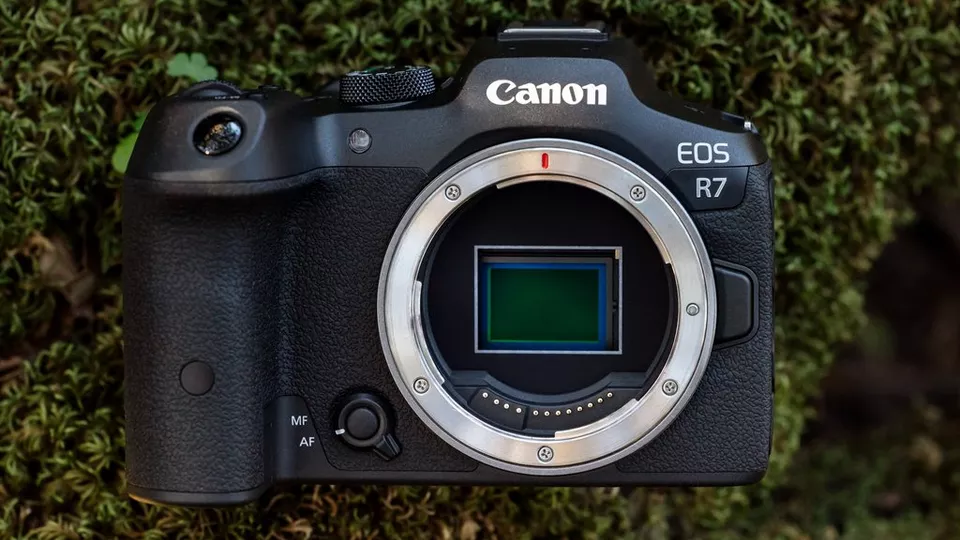
Mirrorless Cameras
As the name suggests, Mirrorless cameras do not have a mirror system like DSLRs. Instead, they use an electronic viewfinder or an LCD screen for composing images. This design allows them to be more compact and lightweight compared to DSLRs. Key advantages of mirrorless cameras include the following:
- Smaller and lighter: Easier to carry around, making them ideal for travel and everyday use.
- Faster continuous shooting: Generally better for capturing fast-moving subjects like sports and wildlife.
- Silent shooting: Beneficial for situations where discretion is needed, like weddings or wildlife photography.
- Real-time exposure preview: This allows you to see the final exposure before capturing the image, which can be helpful for beginners.
However, mirrorless cameras have some drawbacks, such as shorter battery life, fewer native lens options (although this is improving), and a less ergonomic grip than DSLRs.
Best Mirrorless Cameras for Beginners:
- Sony Alpha a6000: A popular and affordable option, the a6000 offers a 24.3-megapixel APS-C sensor, 11 fps continuous shooting, and built-in Wi-Fi for easy sharing.
- Canon EOS M50: This beginner-friendly camera features a 24.1-megapixel APS-C sensor, Dual Pixel autofocus, and a fully articulating touchscreen.
- Fujifilm X-T200: Known for its retro design and excellent color reproduction, the X-T200 boasts a 24.2-megapixel APS-C sensor, 4K video capabilities, and a user-friendly interface.
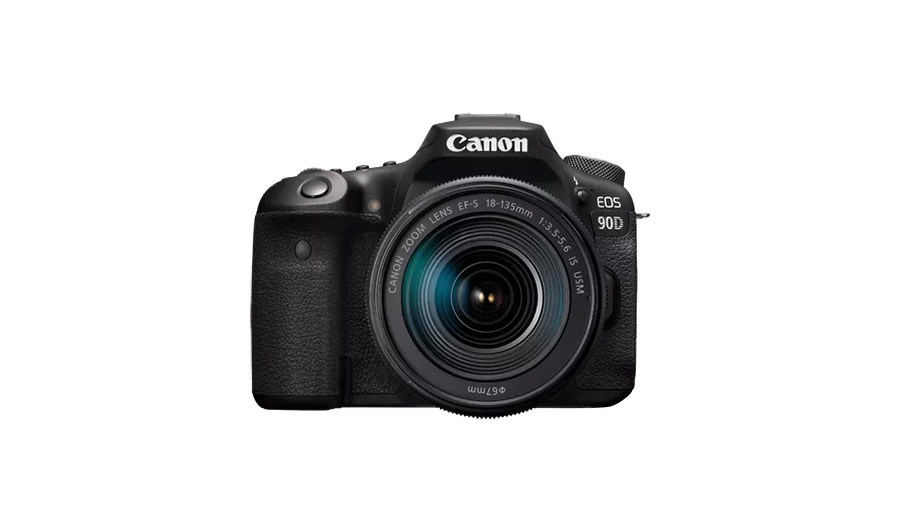
DSLR Cameras
DSLR (Digital Single-Lens Reflex) cameras use a mirror and prism system to direct light from the lens to an optical viewfinder. They have been the industry standard for professional photography for many years, but mirrorless cameras are quickly catching up. Some key advantages of DSLR cameras include the following:
- Longer battery life: DSLRs typically have a longer battery life due to the energy efficiency of their optical viewfinders.
- More lens options: DSLRs have a wider range of compatible lenses from first-party manufacturers and third-party options.
- Better ergonomics: DSLRs often have a larger, more comfortable grip, making them easier to hold for extended periods.
- Optical viewfinder: Provides a clear, real-time view of your subject without any lag, which can be helpful in fast-paced situations.
On the other hand, DSLRs are heavier and bulkier than mirrorless cameras, and their autofocus systems may be slower in live view or video mode.
Best DSLR Cameras for Beginners:
- Nikon D3500: A lightweight and compact entry-level DSLR, the D3500 features a 24.2-megapixel APS-C sensor, five fps continuous shooting, and an 11-point autofocus system.
- Canon EOS Rebel T7i (EOS 800D): This beginner-friendly DSLR offers a 24.2-megapixel APS-C sensor, a 45-point autofocus system, and a fully articulating touchscreen.
- Pentax K-70: A rugged and weather-sealed option, the K-70 boasts a 24.2-megapixel APS-C sensor, in-body image stabilization, and a 100% coverage optical viewfinder.
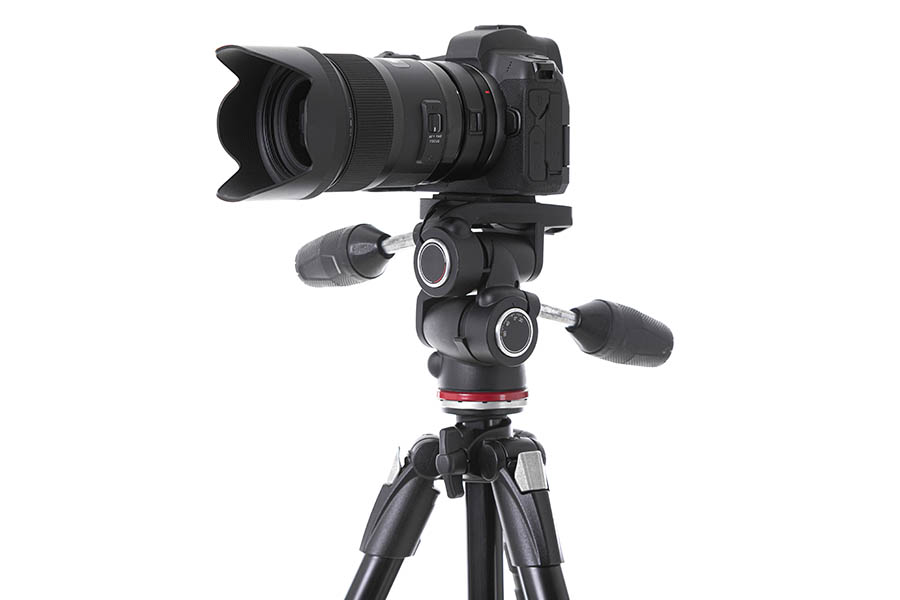
Tripods
Tripods provide stability and support for your camera, enabling you to capture sharp images in various situations. As a beginner, consider these factors when choosing a tripod:
- Weight capacity: Ensure the tripod can support the weight of your camera and lens.
- Height: Look for a tripod with adjustable legs to reach your desired height.
- Portability: Folded size and weight are important for transportation and storage.
- Build quality: Opt for a tripod made of durable materials like aluminum or carbon fiber.
Best Tripods for Beginners:
- Manfrotto Compact Action: With a maximum height of 61 inches, this lightweight and cost-effective tripod can be effortlessly set up.
- MeFOTO RoadTrip Classic: A compact and travel-friendly tripod that converts into a monopod with a maximum height of 61.6 inches.
- Vanguard Alta Pro 263AB 100: A versatile tripod with an adjustable center column, offering a maximum height of 68.1 inches and excellent stability.
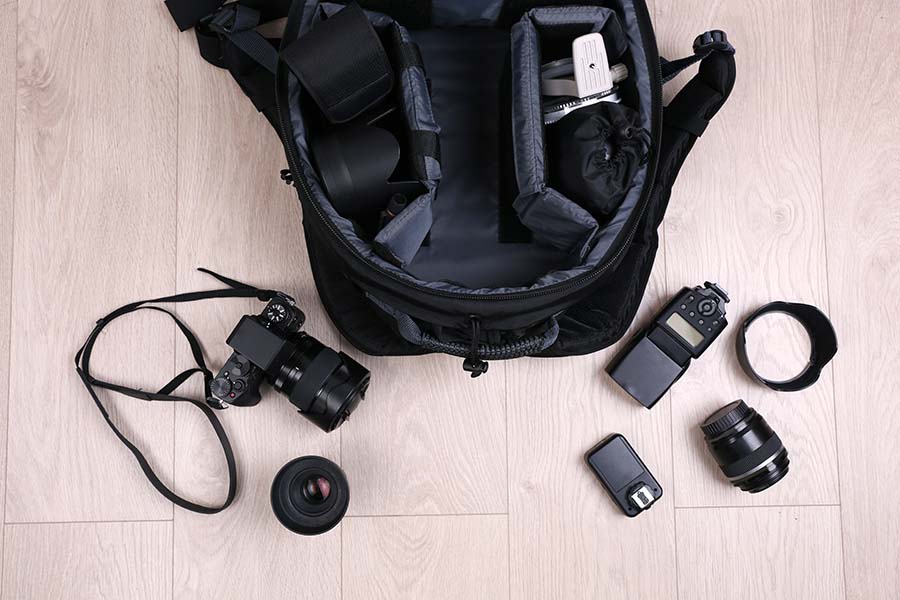
Camera Bags
A high-quality camera bag is crucial for protecting your gear and transporting it easily. Consider the following factors when selecting a camera bag:
- Size and capacity: Ensure the bag can accommodate your camera, lenses, and accessories.
- Padding and protection: Look for a bag with thick padding and adjustable dividers to protect your gear.
- Comfort: Consider the bag’s strap design and padding for comfortable carrying.
- Access: Choose a bag that allows quick and easy access to your equipment.
Best Camera Bags for Beginners:
- Lowepro Format 160: This cost-effective and compact shoulder bag includes adjustable dividers, making it perfect for accommodating a DSLR or mirrorless camera along with a couple of lenses.
- AmazonBasics Backpack for SLR Cameras: A budget-friendly backpack with plenty of storage and adjustable dividers, ideal for those who need more space.
- Peak Design Everyday Messenger: This versatile and trendy bag offers the option of being worn as a crossbody or shoulder bag and is equipped with customizable dividers and quick-access zippers for added convenience.
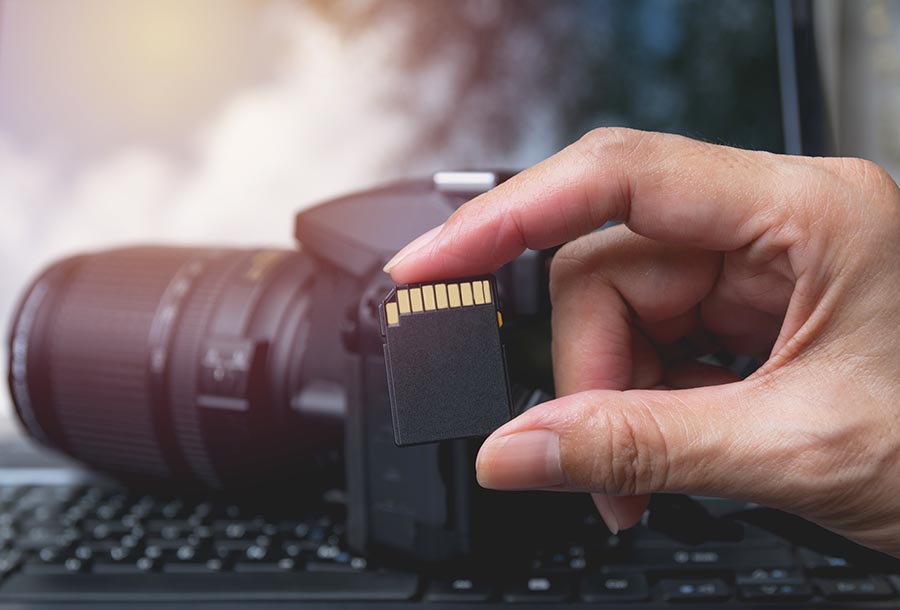
Memory Cards
Memory cards store your digital images, and choosing the right one is crucial for optimal performance. Consider these factors when choosing a memory card:
- Compatibility: Ensure the card is compatible with your camera model.
- Capacity: Select a card with enough storage to accommodate your shooting needs.
- Speed: Look for cards with fast read/write speeds to minimize buffer times and support high-resolution video recording.
Best Memory Cards for Beginners:
- SanDisk Extreme PRO SDXC UHS-I: A reliable and high-performance card available in various capacities (64GB, 128GB, 256GB), with read, speeds up to 170MB/s.
- Lexar Professional 633x SDXC UHS-I: An affordable option with decent performance, offering capacities from 32GB to 1TB and read speeds up to 95MB/s.
- Sony M Series SDXC UHS-II: A high-speed card suitable for 4K video recording and fast continuous shooting, available in 64GB, 128GB, and 256GB capacities with read speeds up to 277MB/s.
- Samsung EVO Select: The Samsung EVO Select is popular among photographers due to its affordability, high-speed performance, and durability. The EVO Select is offered in various capacities, ranging from 32GB to 512GB, and provides rapid read and write speeds, facilitating swift file transfers and ensuring seamless performance when capturing high-resolution photos and videos.
Discover More
Cleaning Supplies
Regular cleaning is essential for maintaining your camera gear and ensuring optimal image quality. Invest in these basic cleaning supplies:
- Microfiber cloth: Soft and lint-free, perfect for wiping away dust and fingerprints from your lens and LCD screen.
- An air blower gently removes dust from your camera’s sensor and lens without touching the surface.
- Lens cleaning solution: A specialized solution for cleaning lens surfaces without leaving residue or streaks.
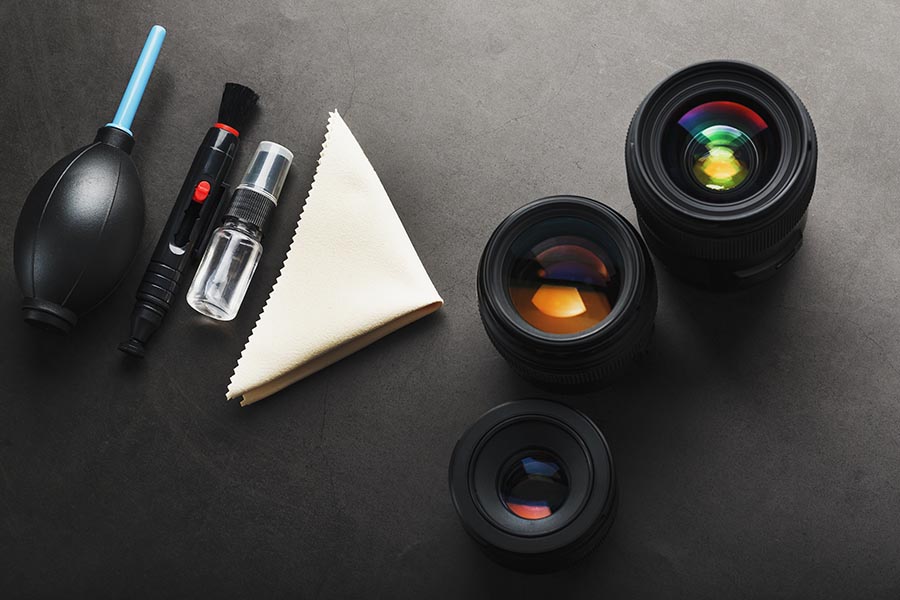
Best Cleaning Kits for Beginners:
- Altura Photo Professional Cleaning Kit: Includes a lens cleaning pen, air blower, microfiber cloth, and cleaning solution.
- Giottos Rocket Air Blaster: A popular air blower with a large capacity and efficient design to effectively remove dust from your camera and lenses.
- CamKix Professional Camera Cleaning Kit: A comprehensive kit with a double-sided lens cleaning pen, air blower, brush, cleaning solution, and microfiber cloths.
Investing in the right accessories, such as tripods, camera bags, memory cards, and cleaning supplies, can protect your gear, enhance your photography experience, and ensure the best image quality. Remember that the best models for beginners are those that balance affordability, performance, and ease of use. You can upgrade your accessories to suit your evolving needs as you gain more experience and expand your photography skills.
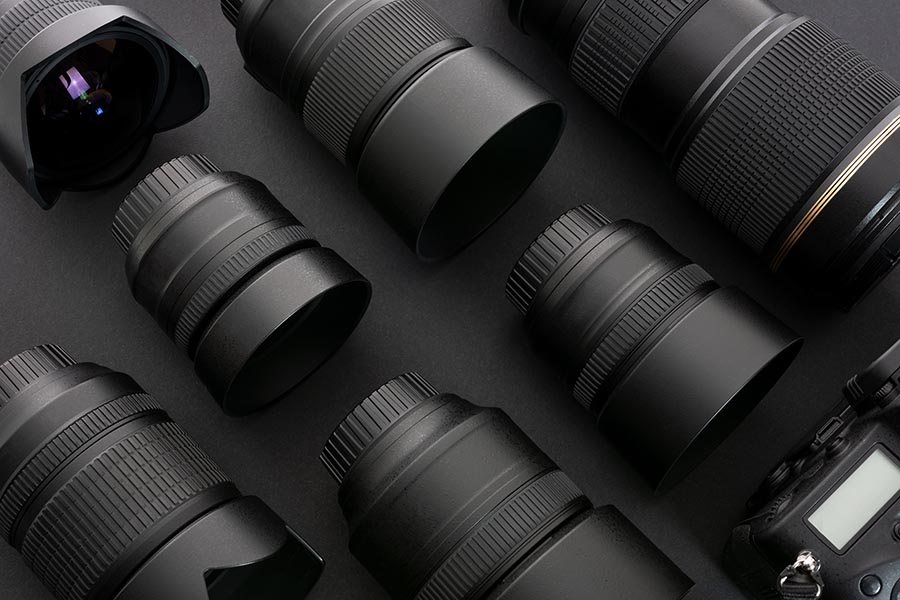
Lenses
Kit Lenses
Kit lenses typically come bundled with your camera and provide a decent range of focal lengths. They’re a good starting point for beginners, enabling you to explore different perspectives and styles without investing in multiple lenses.
Best Kit Lenses for Beginners:
- Canon EF-S 18-55mm f/3.5-5.6 IS STM: A versatile and affordable kit lens for Canon APS-C DSLRs, featuring image stabilization and a quiet STM autofocus motor.
- Nikon AF-P DX NIKKOR 18-55mm f/3.5-5.6G VR: A compact and lightweight kit lens for Nikon DX-format DSLRs, with vibration reduction and a smooth autofocus system.
- Sony E PZ 16-50mm f/3.5-5.6 OSS: A compact, power-zoom kit lens for Sony E-mount mirrorless cameras featuring optical image stabilization.
Prime Lenses
Fixed focal length and superior image quality are the defining characteristics of prime lenses, distinguishing them from zoom lenses. They’re great for learning, as they force you to move and think creatively to compose your shots.
Best Prime Lenses for Beginners:
- Canon EF 50mm f/1.8 STM: Often called the “nifty fifty,” this affordable lens offers excellent image quality, a large aperture for low-light shooting, and a quiet STM autofocus motor.
- Nikon AF-S DX NIKKOR 35mm f/1.8G: A versatile prime lens for Nikon DX-format DSLRs featuring a wide aperture, fast autofocus, and compact design.
- Sony E 50mm f/1.8 OSS: A sharp, fast prime lens for Sony E-mount mirrorless cameras, with optical image stabilization and smooth, quiet autofocus.
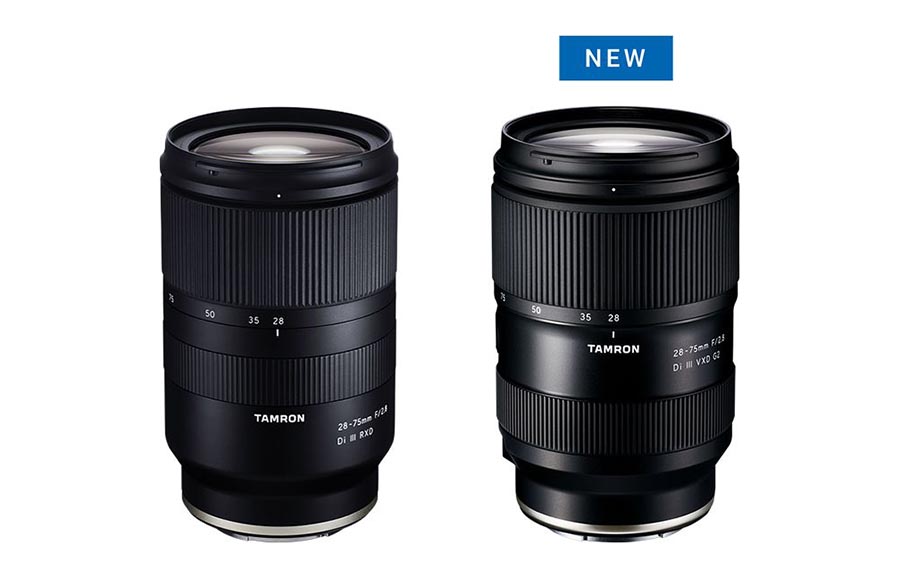
Zoom Lenses
The versatility and convenience of a range of focal lengths in one lens is the main advantage of zoom lenses over prime lenses. A standard zoom lens covering focal lengths from wide-angle to short telephoto (e.g., 18-55mm) is a great option for beginners.
Best Zoom Lenses for Beginners:
- Tamron 28-75mm f/2.8 Di III RXD: A versatile standard zoom lens for Sony E-mount cameras featuring a constant f/2.8 aperture, fast and silent autofocus, and impressive image quality.
- Sigma 17-50mm f/2.8 EX DC OS HSM: An affordable standard zoom lens with a constant f/2.8 aperture, available for Canon, Nikon, and Sigma DSLRs with APS-C sensors.
- Panasonic Lumix G Vario 12-60mm f/3.5-5.6 ASPH: A versatile standard zoom lens for Micro Four Thirds cameras, featuring weather sealing and optical image stabilization.
As a beginner, consider starting with a kit lens, a prime lens (such as a 50mm), and a versatile zoom lens. These lenses will allow you to experiment with various focal lengths, apertures, and photographic styles. As you gain experience and refine your interests, you can invest in more specialized lenses to expand your creative possibilities.
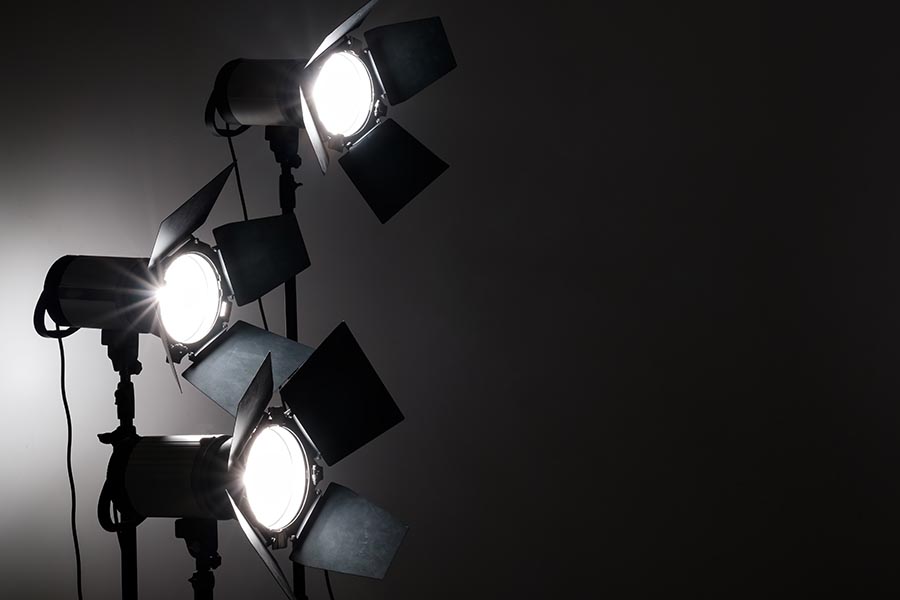
Lighting Equipment
Good lighting is crucial for creating high-quality images. As a beginner, you don’t need to invest in an elaborate lighting setup, but understanding and working with different lighting equipment can significantly improve your photography. Here are some basic lighting tools for beginners:
Natural Light
Harnessing natural light is the most affordable and accessible way to light your photos. Pay attention to the light’s quality, direction, and color temperature, and experiment with different times of the day.
Reflectors
Reflectors are portable, affordable tools that help you manipulate natural or artificial light. They bounce light onto your subject, filling in shadows and providing even illumination. Reflectors come in various colors and sizes, most commonly silver, gold, and white.
Speedlights
Speedlights, or external flash units, attach to your camera’s hot shoe and provide a more powerful and adjustable light source than your camera’s built-in flash. They’re portable and versatile, making them ideal for beginners exploring off-camera flash photography.

Best Speedlights for Beginners:
- Yongnuo YN560 IV: An affordable, manual flash with built-in wireless capabilities, compatible with most camera brands.
- Godox TT685: A versatile flash with TTL (Through The Lens) metering and wireless functionality, available for Canon, Nikon, Sony, Fujifilm, and Olympus/Panasonic cameras.
- Nikon SB-700: A reliable, mid-range speedlight for Nikon users, offering TTL metering, wireless capabilities, and a user-friendly interface.
Post-Processing Tools
Editing your photos is an essential step in the photography process, as it allows you to fine-tune your images and develop your unique style. Here are some beginner-friendly post-production tools:
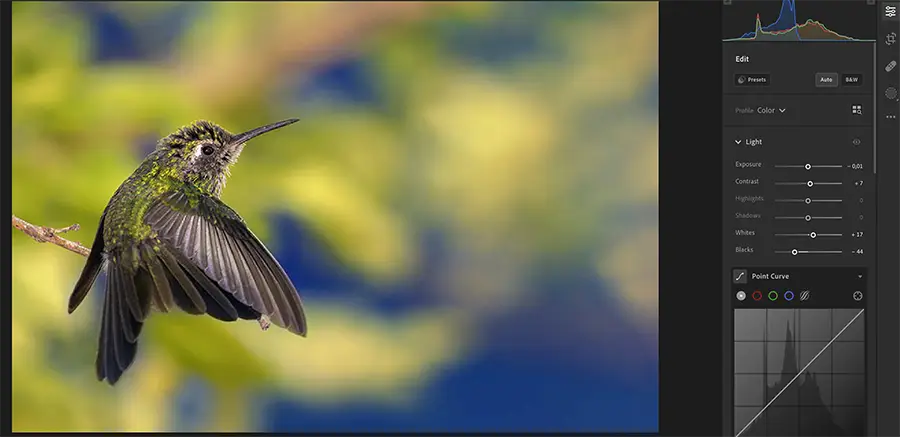
Adobe Lightroom
As a comprehensive photo editing and management software for photographers, Adobe Lightroom offers a non-destructive workflow. This means you can adjust and edit your images without permanently altering the original files. Additionally, some of the key features of Adobe Lightroom include:
- Image Organization: Lightroom uses a catalog system to help you efficiently manage and organize your photos. You can assign keywords, ratings, and flags to your images, making it easier to sort and locate them later.
- RAW Processing: Lightroom supports RAW file formats, allowing you to edit and process high-quality images without losing any detail.
- Basic Adjustments: Lightroom provides a wide range of editing tools for adjusting exposure, contrast, white balance, highlights, shadows, and more. These adjustments help you fine-tune your images and achieve the desired look.
- Advanced Editing Tools: Lightroom has advanced tools like local adjustment brushes, gradient filters, and spot removal tools. These tools let you make precise edits and enhancements to specific areas of your image.
- Presets: Lightroom features built-in presets and allows you to create custom presets for applying consistent edits and styles to multiple images quickly.
- Export and Sharing: Lightroom makes it easy to export your images in various formats and share them on social media or through online galleries once you’ve finished editing.
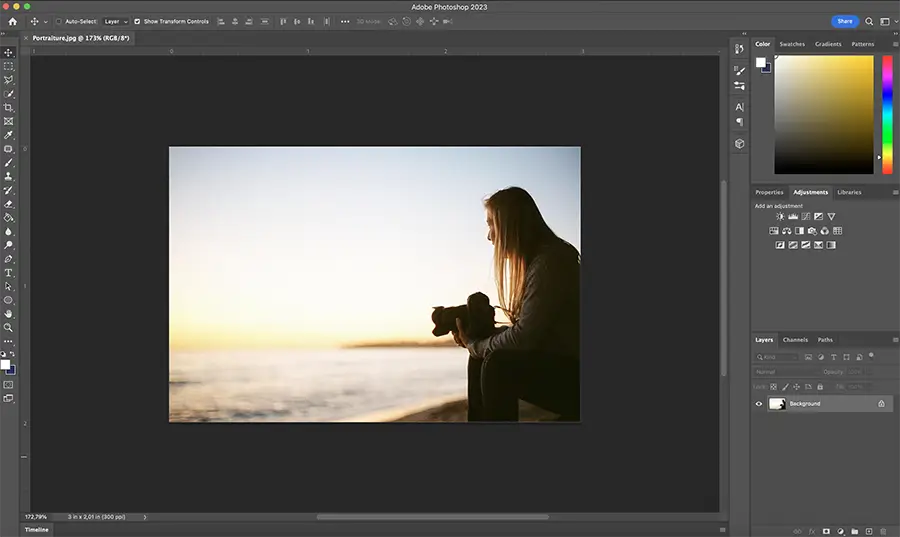
Adobe Photoshop
Adobe Photoshop is a versatile image editing software used by photographers, graphic designers, and digital artists for various purposes. It offers more advanced and complex editing capabilities than Lightroom, making it ideal for intricate retouching, compositing, and design work. Key features of Adobe Photoshop include:
- Layers and Masks: Photoshop’s layer and mask system allows you to edit and manipulate different parts of your image without affecting the original pixels. This non-destructive approach provides maximum flexibility and control over your edits.
- Advanced Retouching Tools: With the Clone Stamp, Healing Brush, and Patch Tool, Photoshop provides a vast array of tools for advanced retouching. These tools can remove unwanted elements, repair flaws, and refine your images.
- Compositing: Photoshop excels at merging multiple images or elements to produce a single composition. With this feature, you can create imaginative and intricate scenes that surpass what is achievable in a single photograph.
- Text and Graphics: Photoshop’s extensive text and graphics capabilities make it an excellent choice for creating promotional materials, designing logos, or adding custom typography to your images.
- Filters and Effects: Photoshop features an extensive collection of filters and effects for transforming and stylizing your images, such as blurs, distortions, and artistic effects.
- Plugins and Extensions: Photoshop supports third-party plugins and extensions, which can further expand its capabilities and streamline your workflow.

GIMP
GIMP (GNU Image Manipulation Program) is a free, open-source alternative to Adobe Photoshop. It offers many of the same features, making it a great option for beginners on a budget.
Luminar AI
Luminar AI is a photo editing software that employs artificial intelligence to streamline editing. Inexperienced editors can benefit from the user-friendly interface and AI-powered software tools. These features enable users to produce professional-looking images with ease and efficiency.
For novice photographers, trying out various lighting equipment and post-production tools is crucial to identify the ones that suit their style. Properly investing in the appropriate tools and developing proficiency in their usage can assist beginners in refining their skills, enhancing image quality, and creating a unique photographic style that is distinct to them.
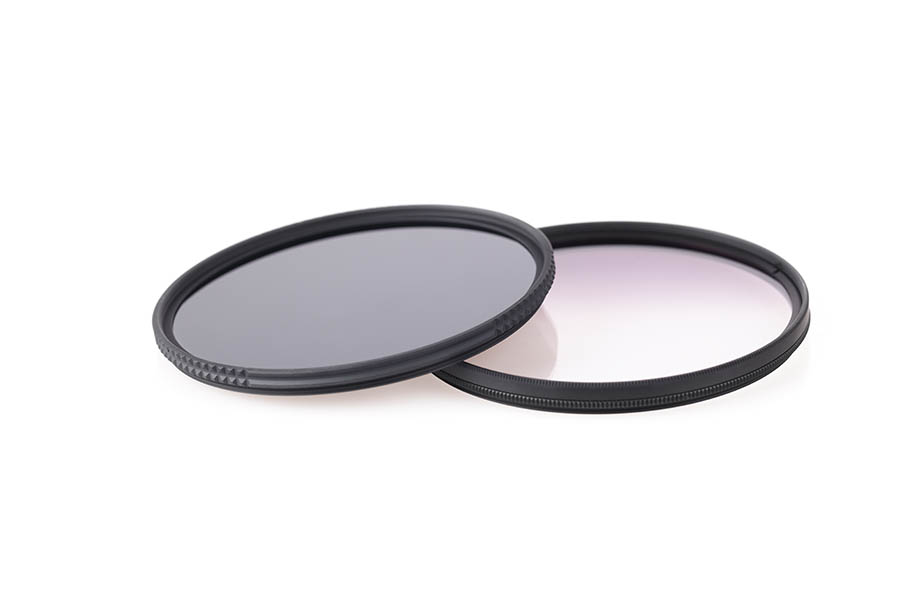
Filters
Filters are essential accessories that help you control and manipulate light, enhance colors, and improve the overall quality of your images. As a beginner, it is best to concentrate on the most frequently utilized filters among the numerous types available:
UV Filters
UV filters protect your lens from scratches, dust, and fingerprints while reducing haze caused by ultraviolet light. They are often used as a protective measure rather than for their effect on image quality.
Best UV Filters for Beginners:
- Hoya Digital HMC UV: A high-quality, multi-coated filter that protects and reduces haze.
- B+W F-Pro MRC 010M UV-Haze: A premium filter with multi-resistant coatings, offering excellent protection and improved image quality.

Circular Polarizing Filters
Circular polarizing filters (CPL) reduce glare and reflections from non-metallic surfaces, enhance colors and increase contrast. They’re ideal for landscape and outdoor photography.
Best Circular Polarizing Filters for Beginners:
- Hoya HD3 Circular Polarizer: A high-quality, ultra-hard CPL filter with excellent color and contrast enhancement.
- B+W F-Pro Kaesemann High Transmission Circular Polarizer MRC: A top-of-the-line CPL filter with multi-resistant coatings, providing superb color saturation and contrast.
Neutral Density Filters
By reducing the amount of light that enters the lens, neutral density (ND) filters enable the use of slower shutter speeds or wider apertures in bright conditions. Consequently, they prove beneficial in producing motion blur effects or achieving shallow depth of field when shooting in bright light.
Best Neutral Density Filters for Beginners:
- Tiffen Variable ND Filter: An affordable variable ND filter that offers a range of 2 to 8 stops of light reduction.
- Haida Red Diamond ND Filter: A high-quality ND filter available in various strengths, featuring a slim profile and excellent color accuracy.
Flash Accessories
Flash accessories can help you shape and control the light from your speedlight, creating more flattering and creative lighting effects. Some common flash accessories for beginners include:
- Diffusers: Soften the light from your flash, reducing harsh shadows and creating more even illumination.
- Bounce cards: Reflect light from your flash onto a larger surface, further softening the light and creating more natural-looking shadows.
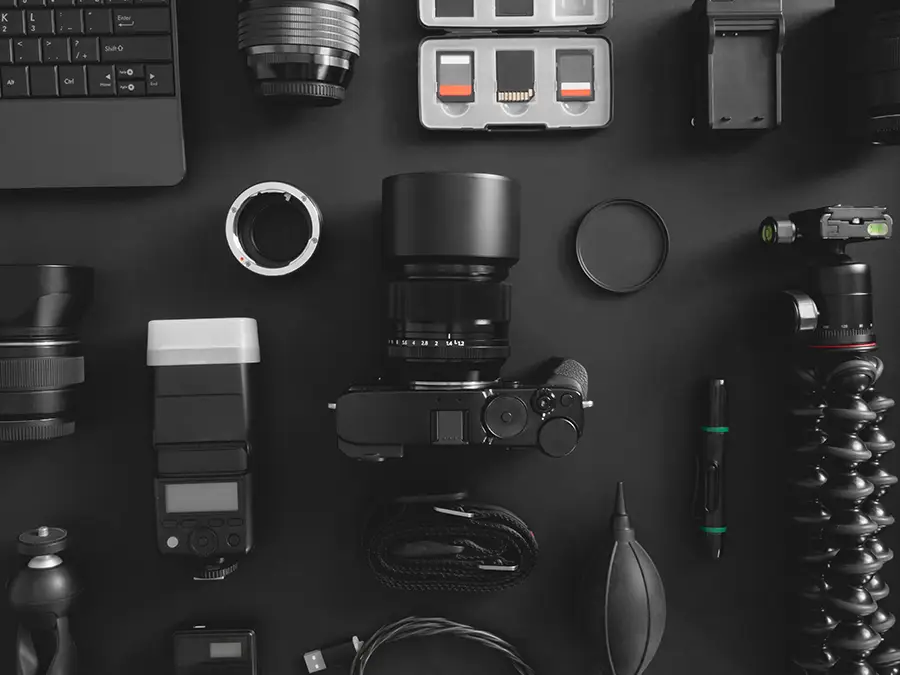
Conclusion
To sum up, starting your photography journey can be both thrilling and intimidating. However, having the appropriate camera equipment and accessories can significantly enhance your learning experience and improve the quality of your images. As a beginner, focus on understanding the basics of camera types, lenses, lighting, filters, and post-production tools. Invest in versatile and affordable gear that will allow you to experiment and grow as a photographer.
Remember that practice is key; the more you use your equipment, the better you’ll become at capturing stunning images. Do not hesitate to explore and experiment with various techniques and settings, as this will aid in developing your distinct photographic style. Finally, keep learning and stay updated with the latest advancements in photography technology to ensure you make the most out of your camera equipment and accessories. Happy shooting!
FAQs
There’s no one-size-fits-all answer, as it depends on your budget and preferences. Consider starting with a point-and-shoot, mirrorless, or entry-level DSLR camera
This depends on your budget and needs. You can find decent entry-level cameras for a few hundred dollars but expect to pay more for advanced features and better image quality.
Lenses often significantly impact image quality more than the camera body. Invest in quality lenses, and upgrade your camera body as you gain experience and require more advanced features.


